

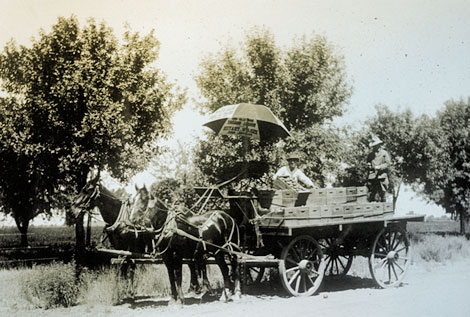 Citrus was a major economic crop in the Salt River Valley. Here, boxed citrus is ready for market. (Reclamation photograph)
Citrus was a major economic crop in the Salt River Valley. Here, boxed citrus is ready for market. (Reclamation photograph)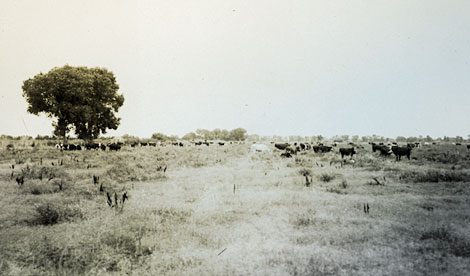 Alfalfa fields were common throughout the valley, and milk cows were another part of the valley economy. (Reclamation photograph)
Alfalfa fields were common throughout the valley, and milk cows were another part of the valley economy. (Reclamation photograph)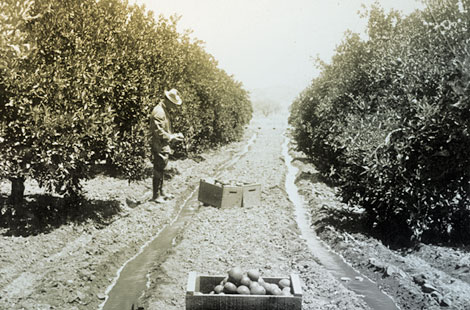 Citrus orchards dotted the valley once a reliable water supply was assured with the completion of Roosevelt Dam. (Reclamation photograph)
Citrus orchards dotted the valley once a reliable water supply was assured with the completion of Roosevelt Dam. (Reclamation photograph)With the completion of Roosevelt Dam in 1911, it was not long before people in the Salt River Valley began to reap the benefits of a secure water supply. Less than a year later, Arizona became the 48th state on February 14, 1912. With statehood came added political clout in Washington, D.C. and a new energy in the Salt River Valley. In 1900, 10 main canals irrigated 113,000 acres of farmland; fifteen years later, almost 250,000 acres of land were planted mostly in alfalfa, grains, and cotton. Citrus groves dotted the valley. Ranching also grew rapidly. The entry of the United States into the First World War in 1917 provided an added stimulus to this growth, but also carried the seeds of future problems. The Salt River Valley Water Users Association and the Reclamation Service continued to work together improving and enlarging the canal and lateral system. The Reclamation Service bought out the few remaining private canals, ensuring the entire system was federally owned. Federal ownership eliminated the often contentious, and occasionally violent, confrontations over water that had plagued valley farmers for decades. It continued to enlarge and improve the canals, and even built new canals. In 1917, the Reclamation Service contracted the operation and management of the irrigation system to the Water Users Association, but ownership and oversight remained with the federal government.
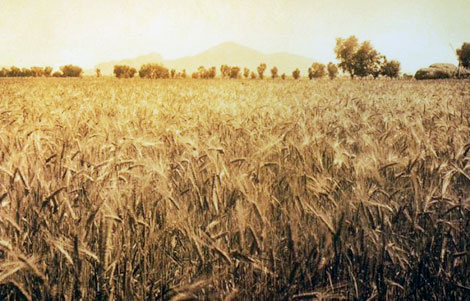 Amber waves of grain with Camelback Mountain on the horizon. (Reclamation photograph)
Amber waves of grain with Camelback Mountain on the horizon. (Reclamation photograph)Besides transporting water, the sprawling irrigation system served other important needs. It provided a way for people to move around the valley. Roads and streets were few and far between outside the downtown areas, and the canals and laterals became de facto transportation corridors. In some areas, the canal and lateral identification number served as a homeowner's address! People used the canals and laterals for recreation, socializing, and to cool down during hot summer days. A variety of trees were planted along the canal banks to provide shade and firewood. Cottonwoods were a popular choice; they grew quickly, provided shade, and supplied wood for a variety of uses.
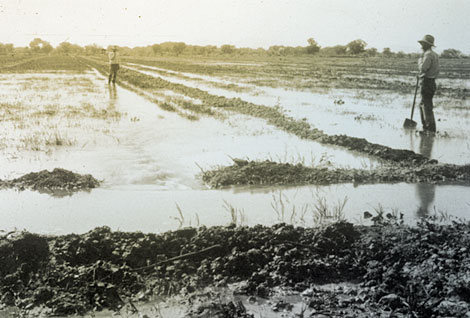 A reliable water supply allowed for flood irrigation of some fields. (Reclamation photograph)
A reliable water supply allowed for flood irrigation of some fields. (Reclamation photograph)
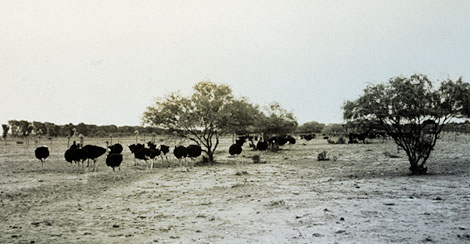 Raising ostriches for their feathers supplemented the income of Chandler farmers until fashions changed and ostrich feather hats went out of style. (Reclamation photograph)
Raising ostriches for their feathers supplemented the income of Chandler farmers until fashions changed and ostrich feather hats went out of style. (Reclamation photograph)
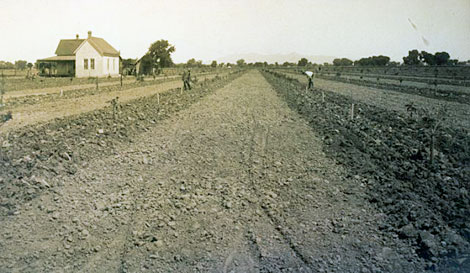 This sugar beet field was located in Glendale. Russian immigrants familiar with growing sugar beets were hired to tend the fields. (Reclamation photograph)
This sugar beet field was located in Glendale. Russian immigrants familiar with growing sugar beets were hired to tend the fields. (Reclamation photograph)
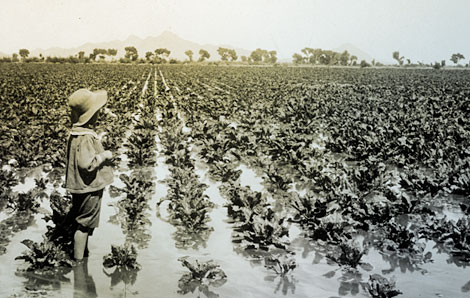 A young child stands ankle-deep in an irrigated field of what may be broad-leaf lettuce. (Reclamation photograph)
A young child stands ankle-deep in an irrigated field of what may be broad-leaf lettuce. (Reclamation photograph)